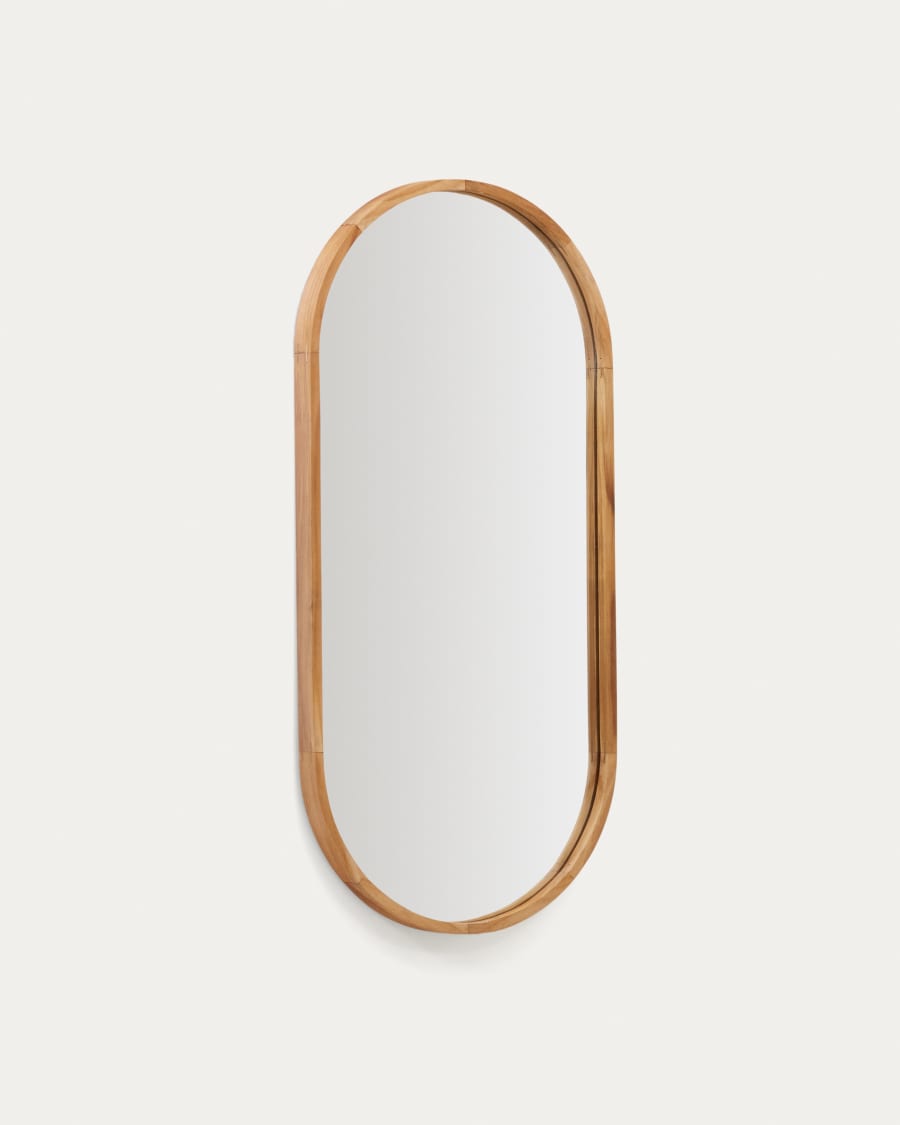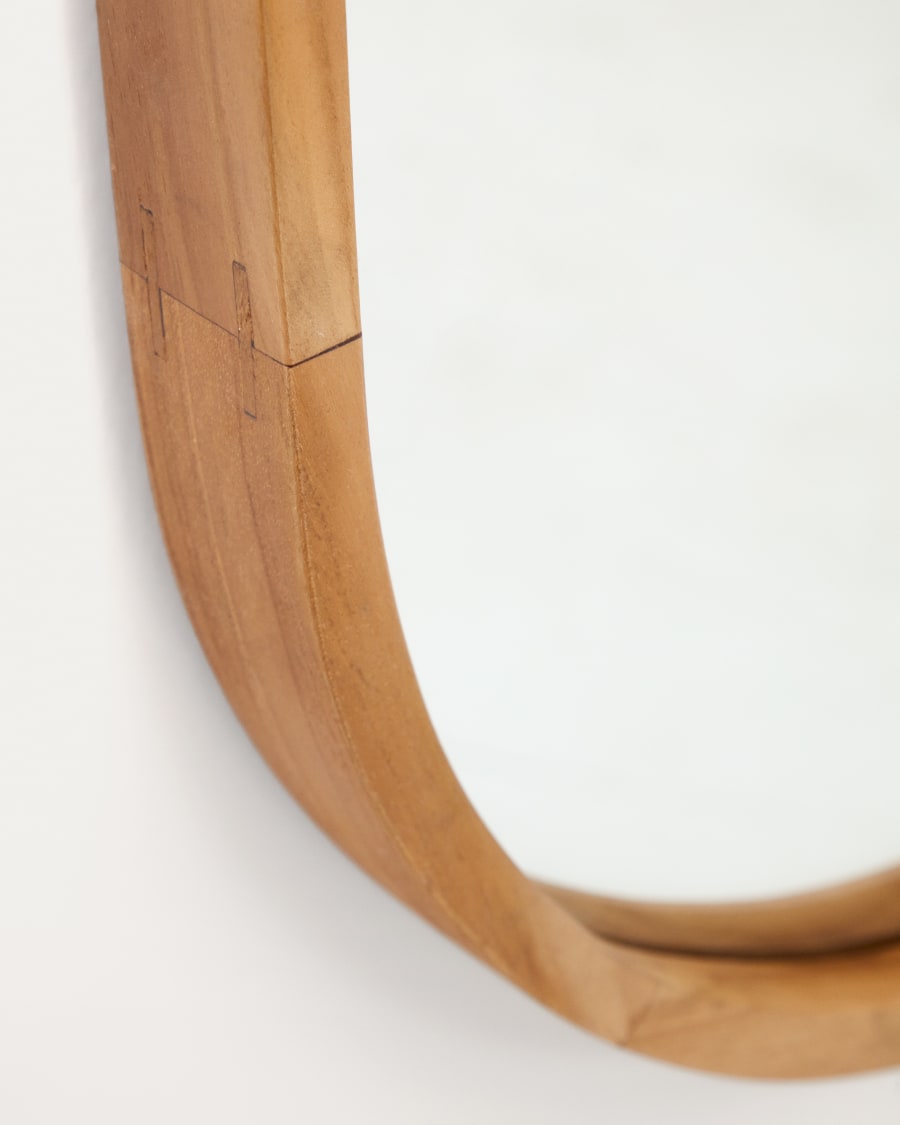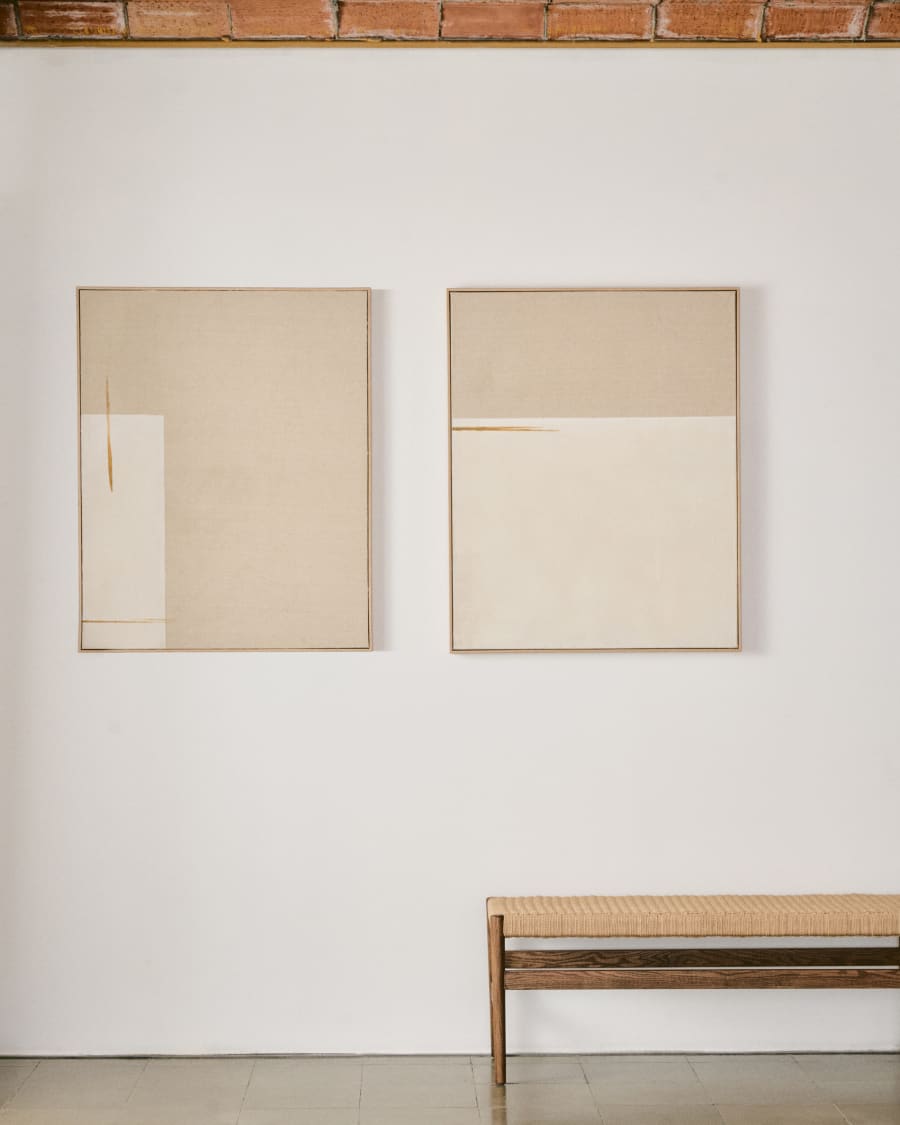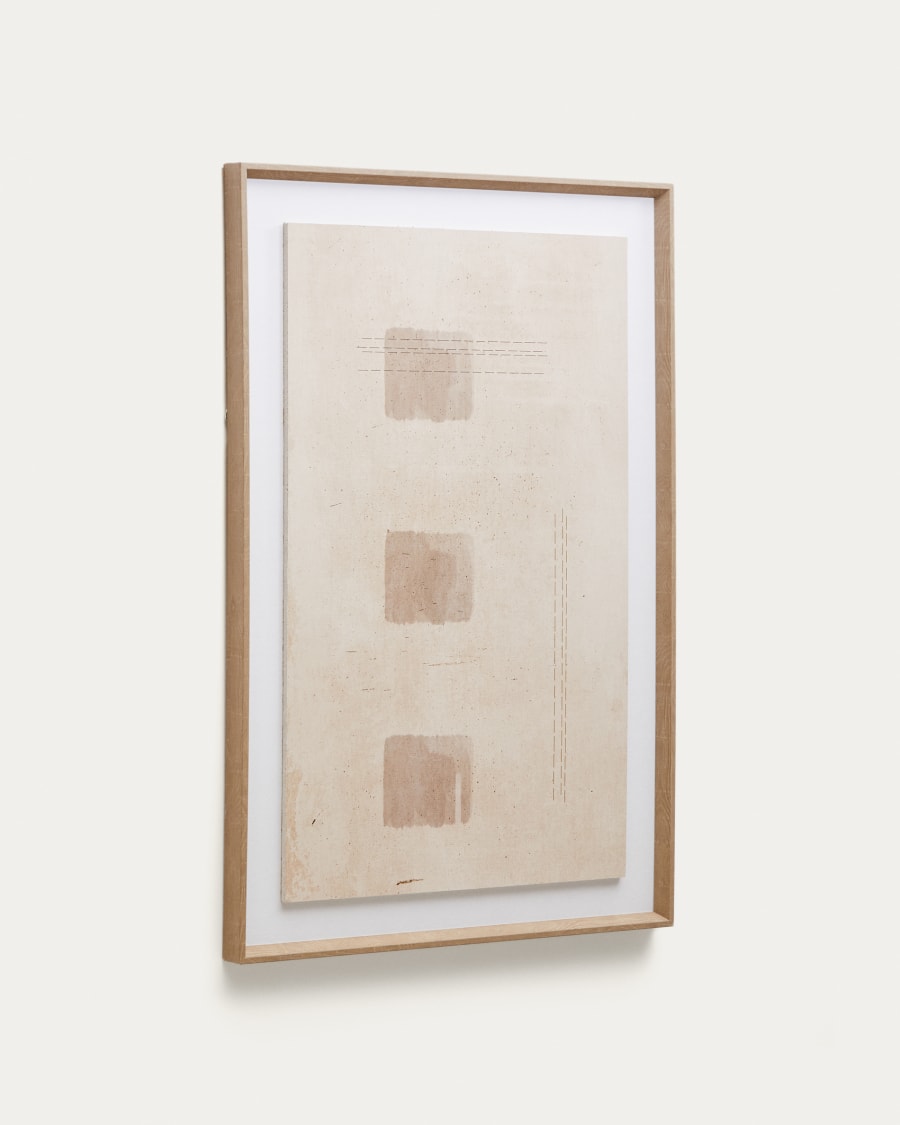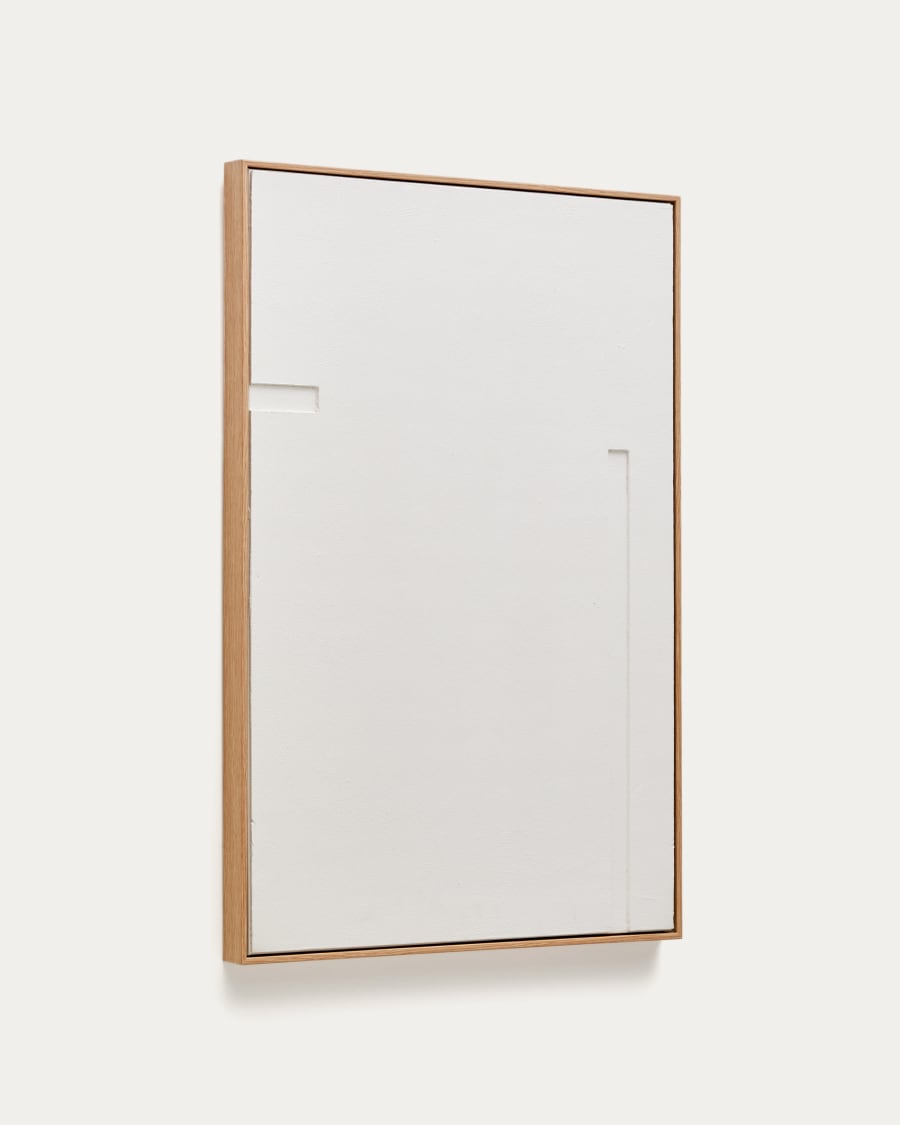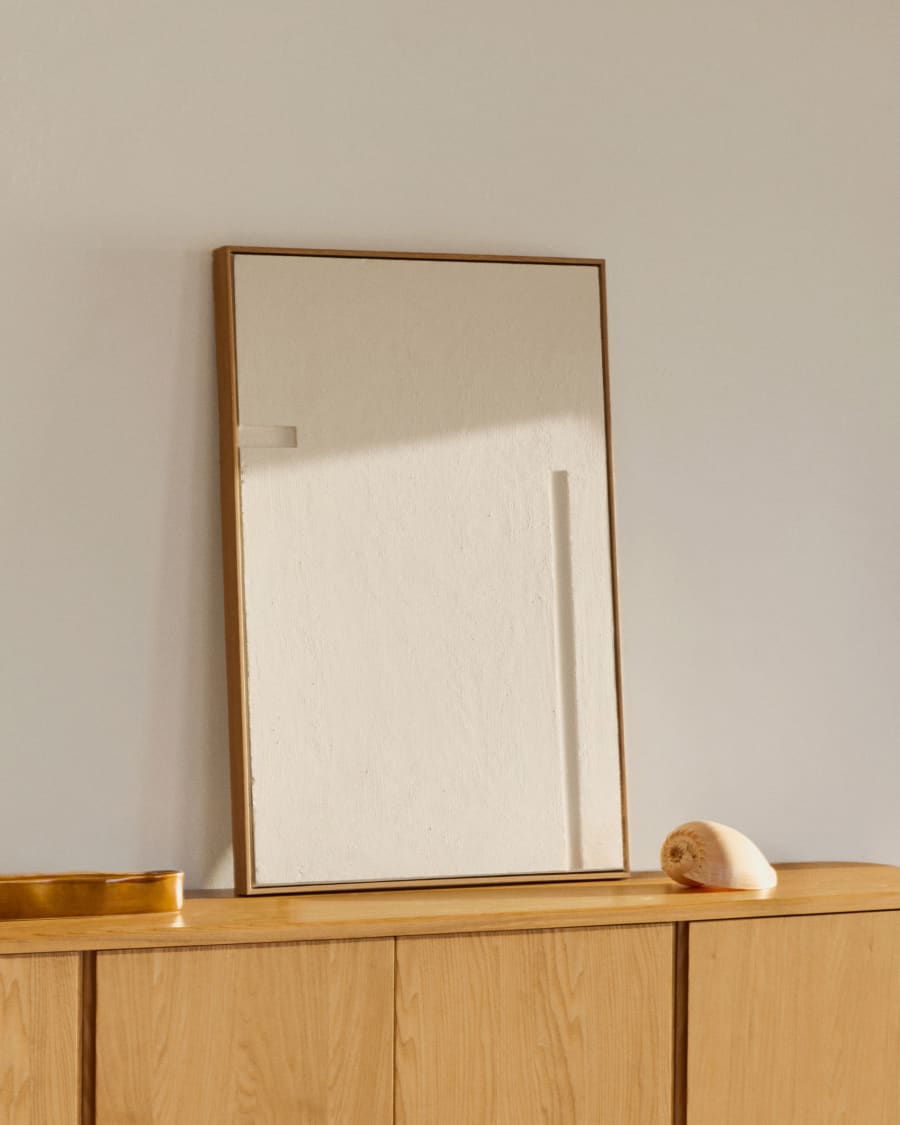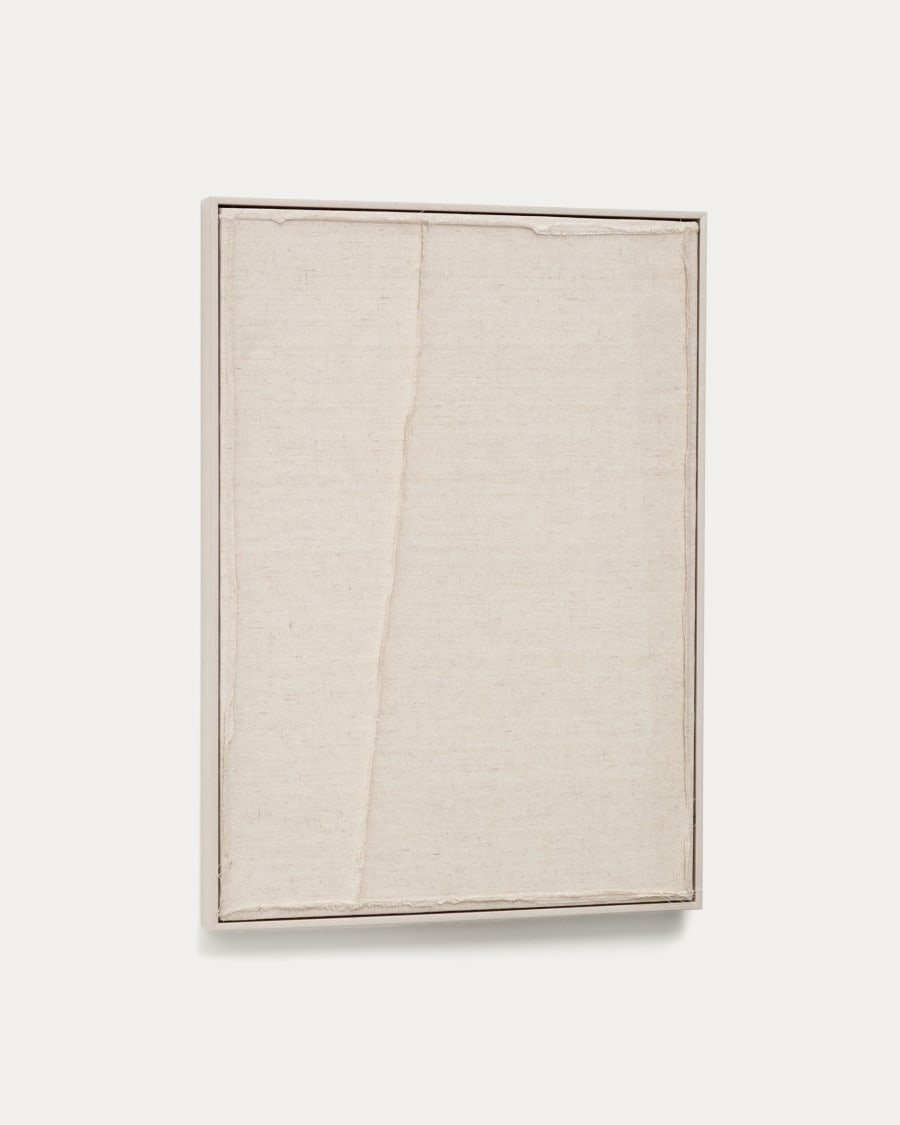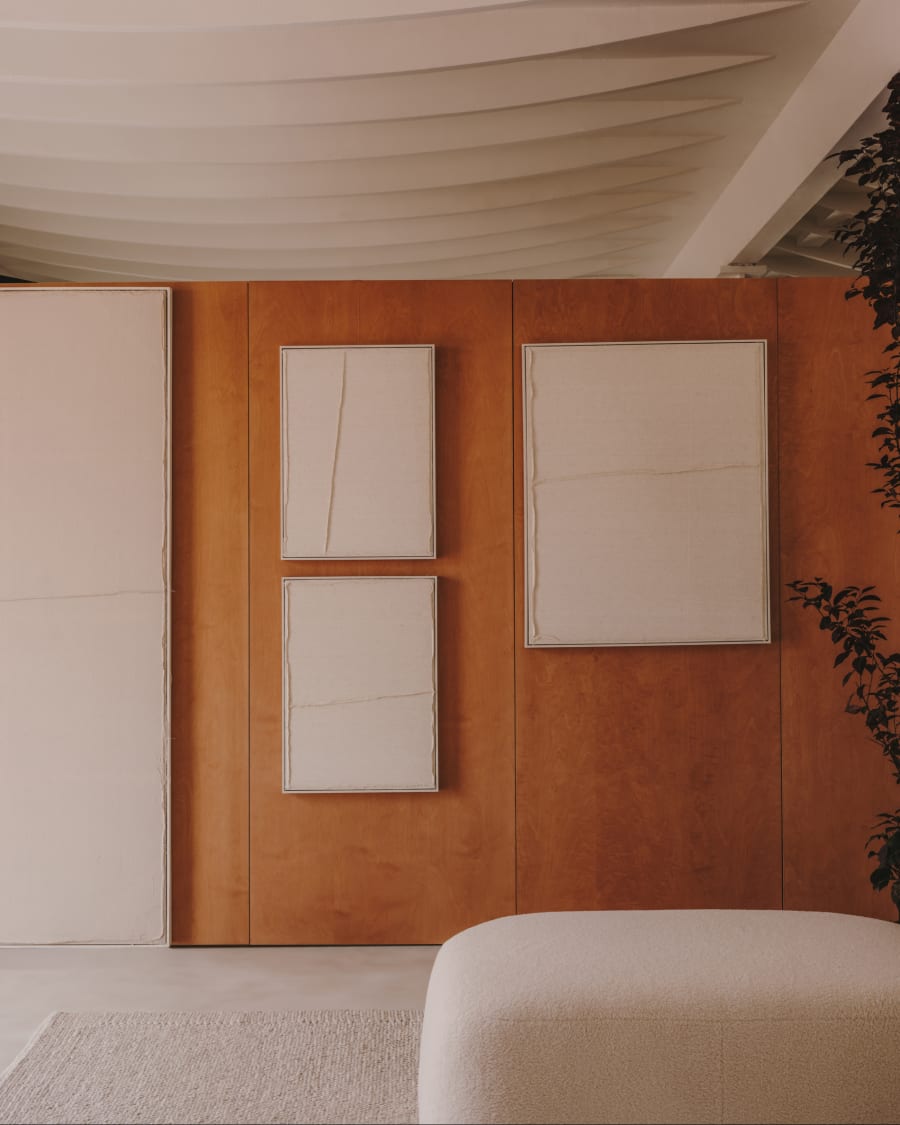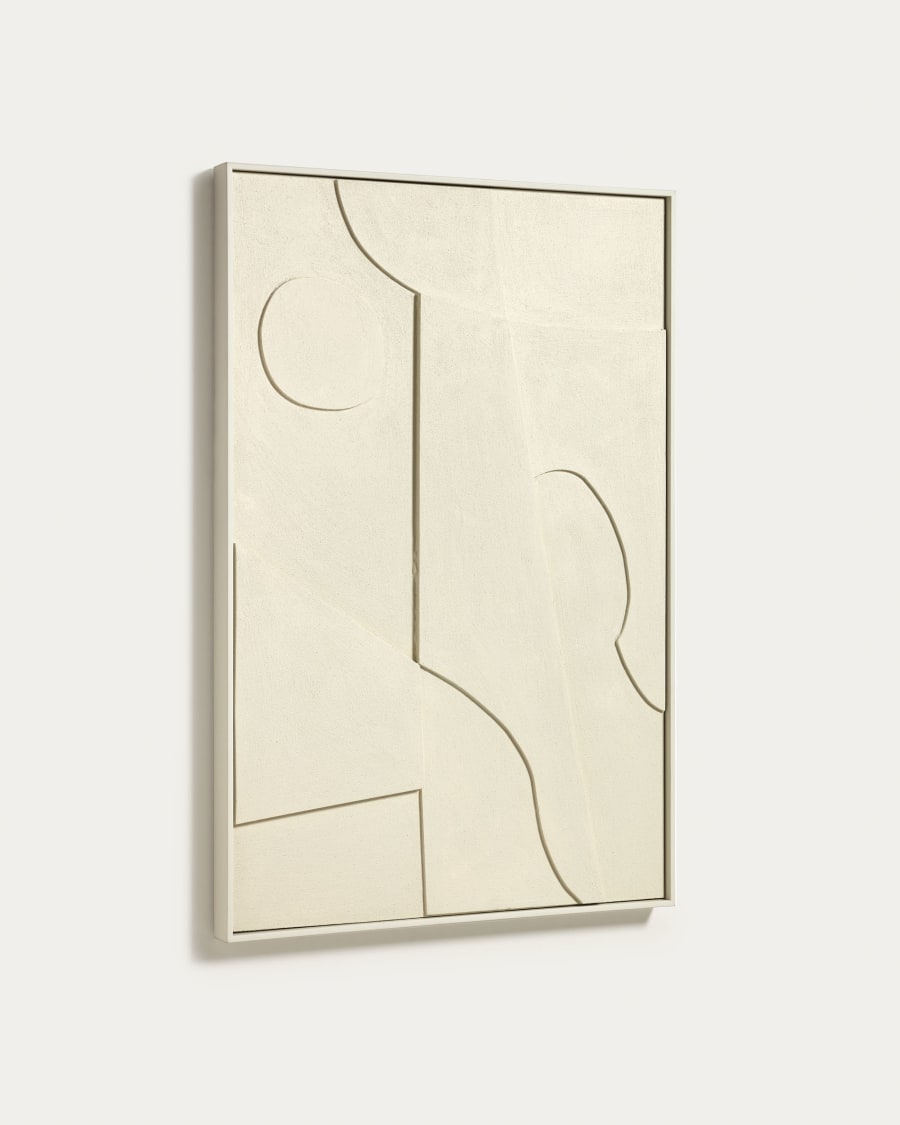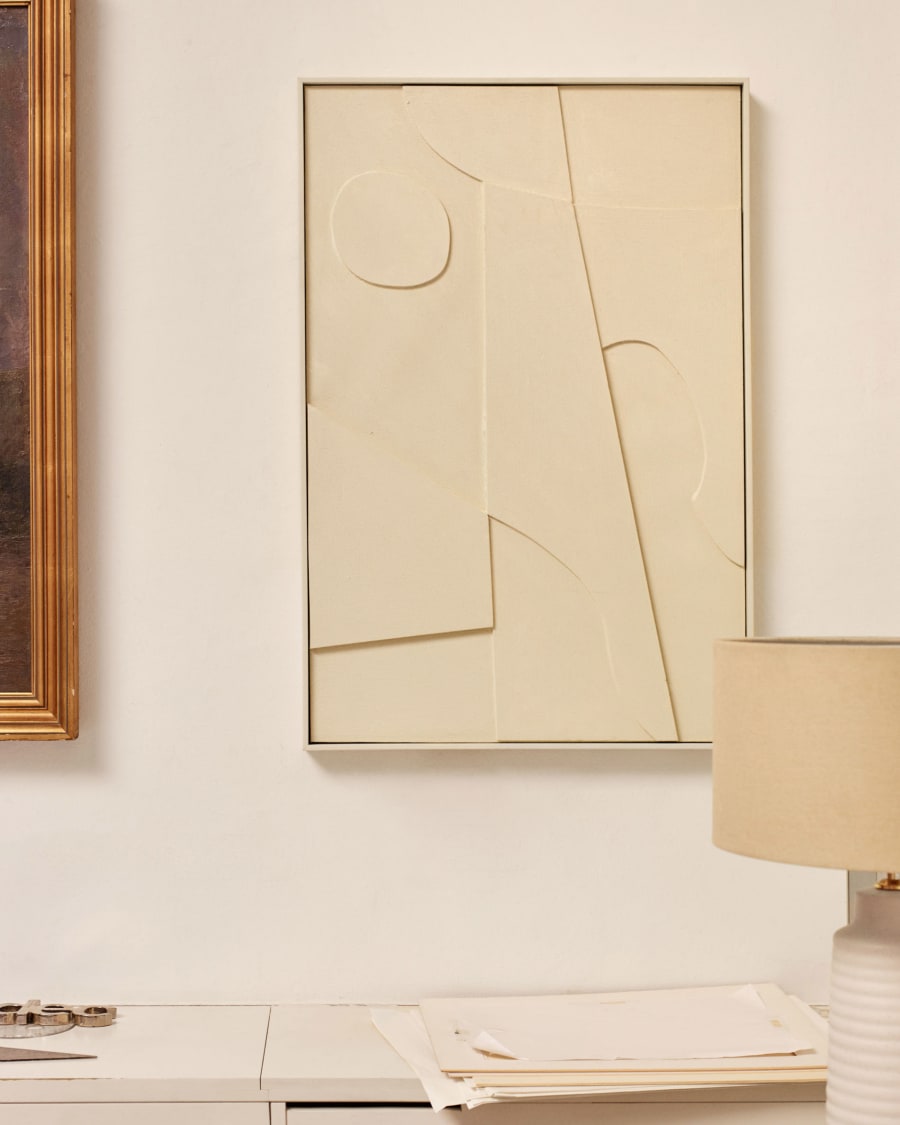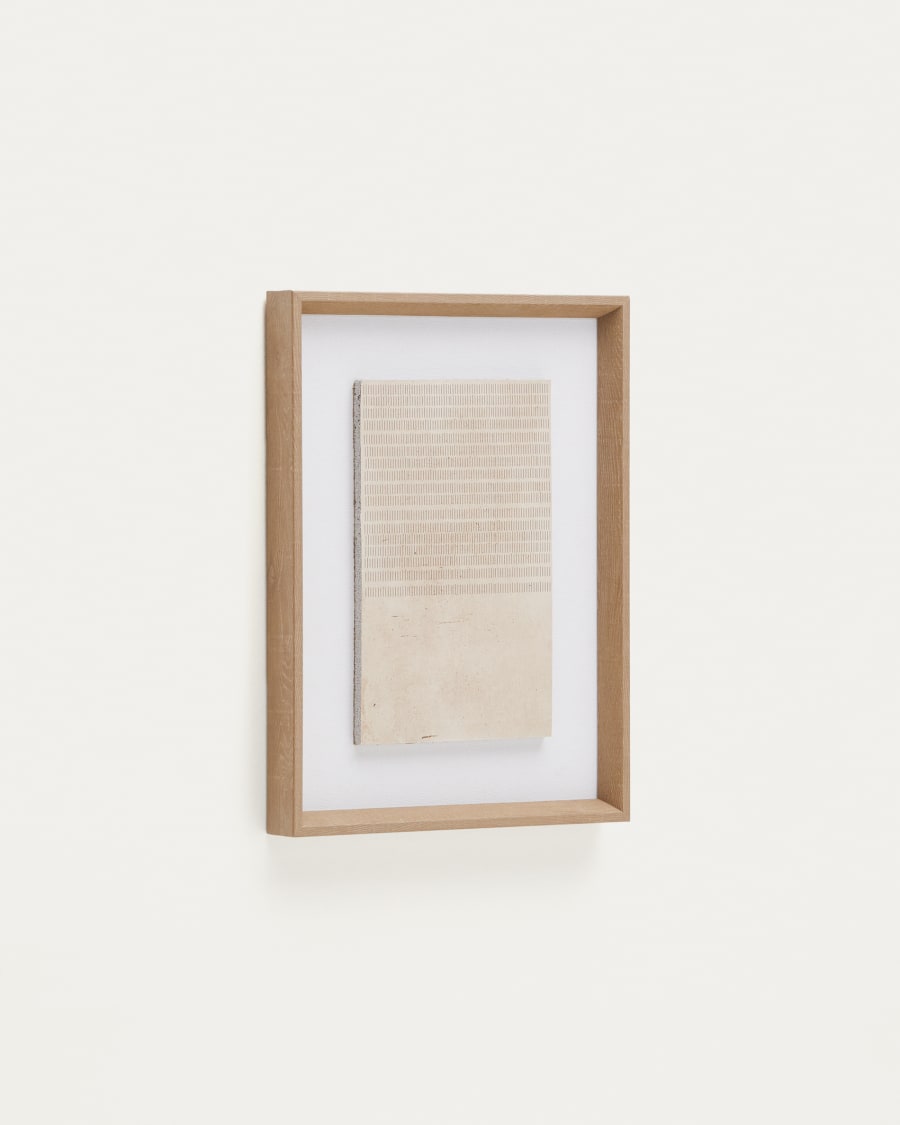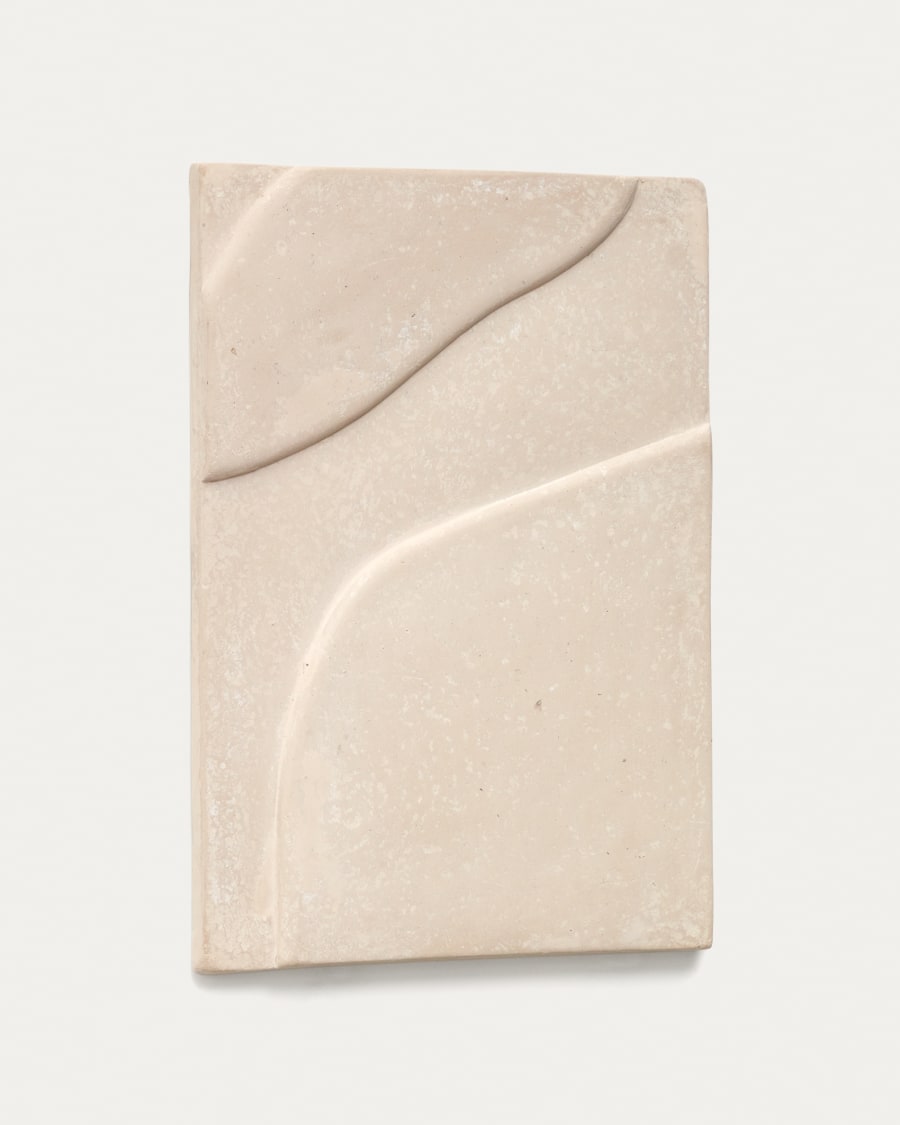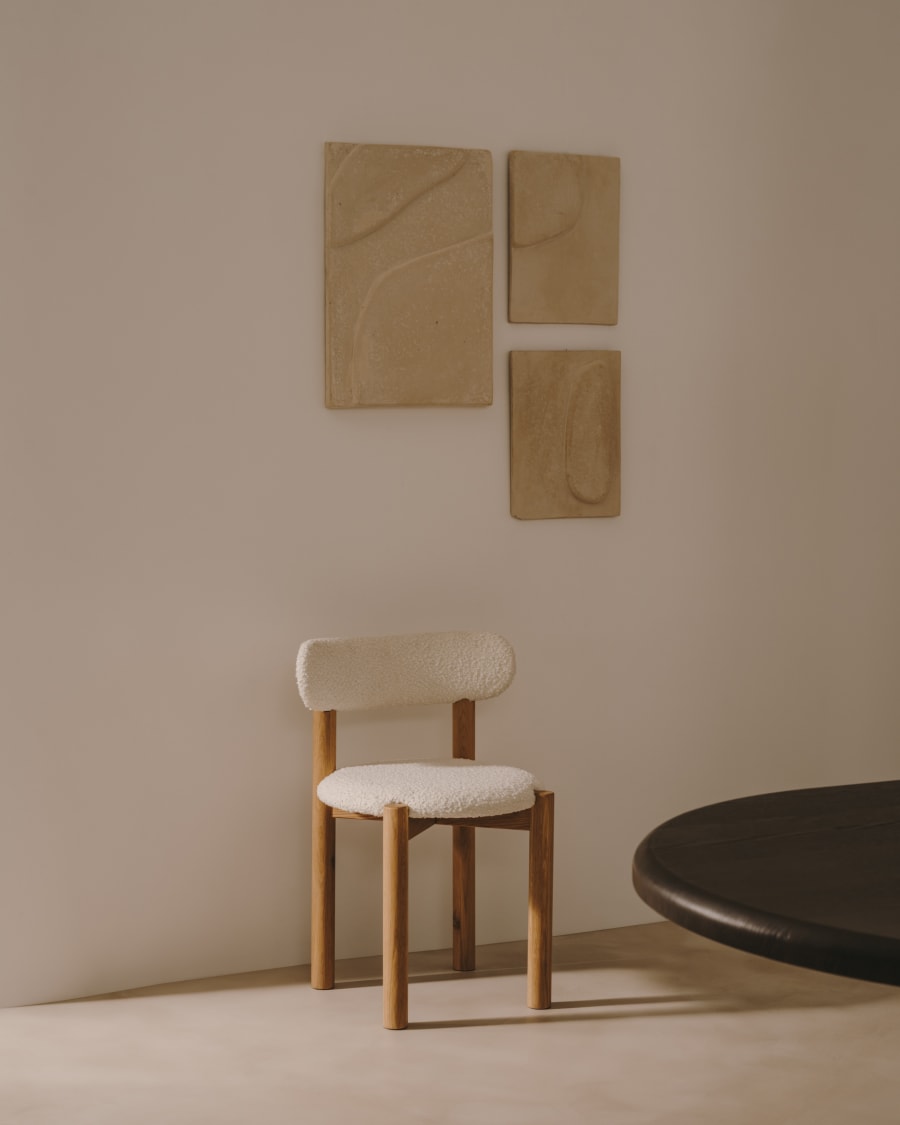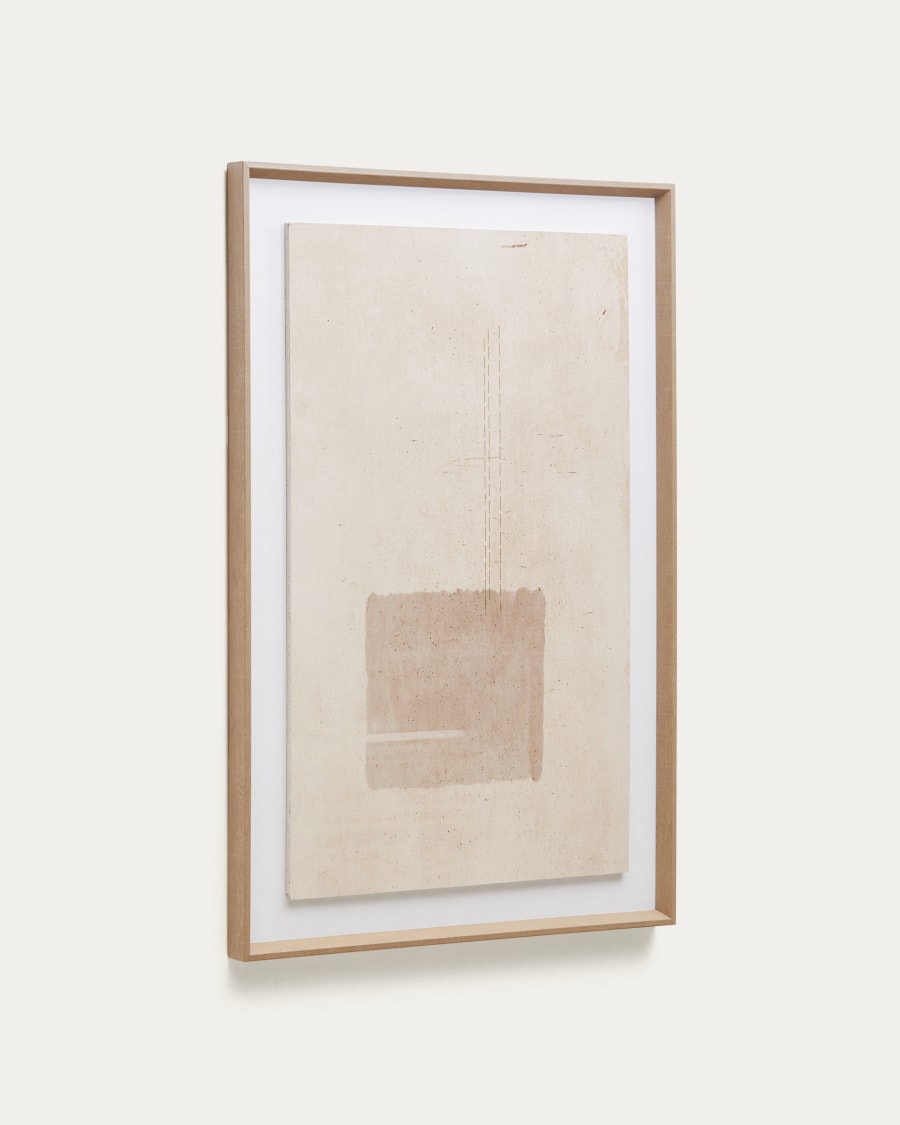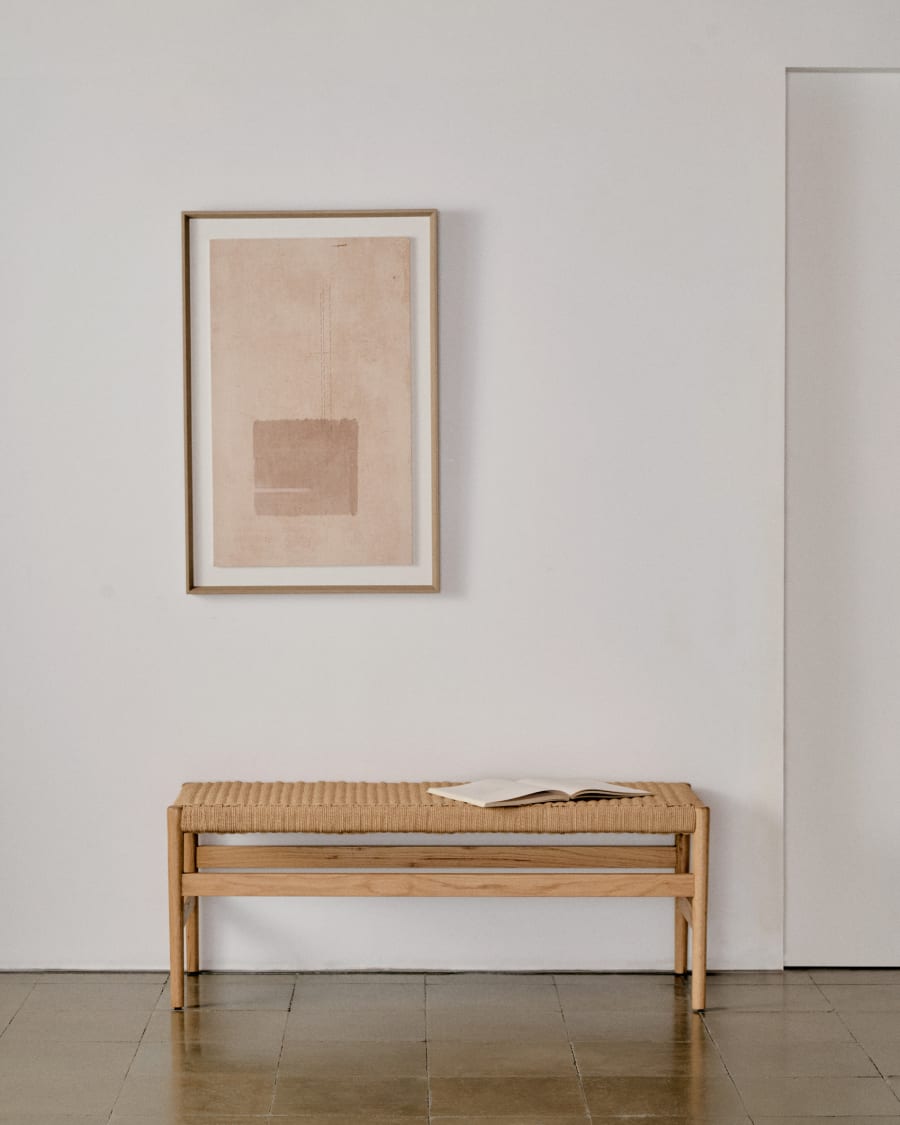- Home
- Japandi Wall Art
Japandi Wall Art
The Japandi Wall Art transforms your interior into a sanctuary of serenity, blending elegance and simplicity for a calming ambiance.
What is Japandi Wall Art?
Japandi Wall Art marries Scandinavian functionality with Japanese minimalism to craft serene, balanced interiors. This hybrid style prioritizes natural elements, muted tones, and intentional simplicity, blending Nordic warmth with Eastern calm. Organic textures and asymmetrical compositions transform spaces into tranquil, uncluttered sanctuaries.
The Fusion Of Japanese Minimalism And Scandinavian Rusticity
Scandinavian design introduces warmth through natural woods, soft textiles, and light palettes, while Japanese minimalism contributes clean lines and uncluttered aesthetics. Wall art showcases raw wood grains, stone textures, or woven fibers that balance cozy and contemporary. Neutral gradients—warm ivories and soft greys—create harmony, avoiding harsh contrasts. Geometric shapes subtly reflect Nordic precision, while organic forms nod to nature’s imperfections, crafting visual balance.
Philosophical Foundations: Wabi-Sabi And Hygge
Rooted in Wabi-Sabi, this art celebrates imperfection through uneven brushstrokes, weathered wood prints, or handmade ceramics that honor impermanence. Hygge adds comfort via linen canvases or macramé wall hangings in muted tones. Together, they build depth without clutter. Asymmetrical compositions with tactile materials like hemp or cork evoke Scandinavian rusticity and Japanese simplicity, proving serenity emerges from intentional imperfection and warmth.
Key characteristics of japandi wall art
Muted palettes and natural textures
Japandi wall art blends Scandinavian minimalism and Japanese wabi-sabi through neutral tones like soft greys, earthy browns, and pale blues. Natural textures—wood, bamboo, jute, and hemp—add depth while maintaining simplicity. These materials merge Nordic warmth with Japanese restraint, creating balanced spaces through smooth-organic contrasts.
- palettes de couleurs: gris doux, bruns terreux, bleus pâles, beige, noir et blanc, vert
- matériaux privilégiés: bois, bambou, jute, chanvre, papier texturé, lin
- caractéristiques visuelles: formes géométriques subtiles, lignes épurées, textures organiques
Themes and subjects
This style blends natural motifs and abstract forms. Landscapes like Mount Fuji or wave patterns evoke tranquility. Zen symbols such as enso circles highlight imperfection and mindfulness. Botanical themes (white herons, magnolia, chrysanthèmes) pair with geometric shapes, merging Japanese symbolism and Scandinavian modernity to craft serene, emotionally resonant spaces.
- nature: grues japonaises, paons blancs, hérons blancs, magnolia, chrysanthèmes, camélias, vagues
- symboles zen: cercles enso, mont fuji
- formes artistiques: art abstrait géométrique, estampes japonaises revisitées, art minimaliste
How to Select Your Ideal Japandi Wall Art
Choosing the Right Medium and Format
| Medium Type | Japandi Characteristics | Ambiance & Effect |
|---|---|---|
| Posters and Art Prints | Simplicity, clean lines, muted tones | Modern, lightweight, ideal for gallery walls |
| Canvas Prints | Raw textures, natural aesthetic, visual depth | Warm, organic, adds character |
| Wood Prints | Authenticity, natural materials, visible grain | Rustic, grounded, Scandinavian roots |
| Fiber Wall Sculptures (e.g., Yashi Designs) | Organic shapes, woven textures, natural fibers | Tactile, unique, wabi-sabi depth |
Matching Art to Your Space and Intent
Choose art by room function: large prints for living rooms, soft abstracts for bedrooms, wood/fiber art for kitchens, geometric shapes for offices, subtle tones for bathrooms.
Prioritize scale and negative space. Oversized pieces suit open areas; smaller ones fit compact spaces. Neutral palettes ensure harmony, letting textures shine.
Integrating Japandi Wall Art for a Tranquil Interior
Creating Harmonious Wall Compositions
Japandi Wall Art thrives on cohesive themes and intentional spacing. Opt for minimalist frames or natural wood finishes to echo Scandinavian simplicity, paired with Japanese-inspired motifs like Enso circles or nature scenes. Group pieces with shared color palettes—think muted greiges, soft blues, or earthy neutrals—to maintain visual calm. Diptyques or triptyques work well, creating symmetry without rigidity. Experiment with asymmetrical layouts for dynamic balance, ensuring each piece “breathes” without overcrowding.
Balancing Negative Space and Visual Impact
- Spacing rules: Leave 5–7.5 cm between artworks to avoid clutter.
- Hanging height: Center pieces at eye level (152 cm from the floor).
- Composition: Prioritize diptyques or balanced asymmetry for intentional flow.
Negative space, or ma, defines Japandi’s serenity. Scientific studies show balanced emptiness reduces cortisol by 27%, enhancing mental clarity. Position art to let walls “breathe,” avoiding overcrowding. A 1:2.5 object-to-empty-space ratio ensures calm. For example, a single framed print above a console table becomes a focal point when surrounded by open space. This intentional void mirrors both wabi-sabi’s acceptance of imperfection and hygge’s cozy simplicity, fostering environments where tranquility feels effortless.
FAQ
What defines Japandi Wall Art as a design style?
Japandi Wall Art merges Scandinavian functionality with Japanese minimalism, creating serene spaces through muted tones, natural materials like wood and jute, and an emphasis on texture. This style balances Scandinavian warmth—think cozy hygge elements—with the Japanese wabi-sabi philosophy, celebrating imperfection and organic beauty. Key characteristics include asymmetric compositions, earthy palettes (greige, soft blues, sage greens), and motifs inspired by nature, such as cranes, cherry blossoms, or abstract wave patterns.
How does Japandi Wall Art differ from pure Scandinavian or Japanese minimalism?
While Scandinavian design prioritizes hygge (coziness) with soft textures and rustic wood, and Japanese minimalism focuses on wabi-sabi (imperfection), Japandi uniquely integrates both. It adds Scandinavian warmth to Japanese austerity through materials like bleached oak alongside raw linen or hemp. Unlike stark minimalism, Japandi incorporates subtle textures—think cracked ceramic prints or organic shapes—to create depth without clutter, merging function with mindful simplicity.
What are the most popular themes in Japandi Wall Art?
Popular themes include:
- Nature motifs: Japanese cranes, koi fish, cherry blossoms, and abstract landscapes
- Symbolic elements: Zen enso circles, Mount Fuji, and asymmetrical wave designs
- Abstract minimalism: Geometric shapes in muted tones or organic forms like curved lines and organic fiber art
These themes reflect both cultures’ reverence for nature and impermanence, often using soft gradients or monochromatic contrasts to evoke tranquility.
How do I choose the right medium for Japandi Wall Art?
| Medium | Best For | Japandi Appeal |
|---|---|---|
| Wood prints | Warm, rustic textures that highlight grain | Embody Scandinavian craftsmanship while complementing Japanese simplicity |
| Textured paper art | Delicate, handcrafted details | Perfect for wabi-sabi-inspired imperfections |
| Canvas | Bold statement pieces | Balances Scandinavian boldness with Japanese negative space |
How can I arrange Japandi Wall Art for maximum impact?
Focus on intentional space and harmony:
- Curate mindfully: Limit to 2-3 pieces per wall to avoid overcrowding
- Embrace negative space: Leave 2–4 inches between frames to let the art “breathe”
- Layer textures: Combine smooth wood frames with rough-hewn jute wall hangings
- Anchor with asymmetry: Use offset diptychs or staggered arrangements that feel balanced yet organic
For a cohesive look, vary artwork sizes but stick to a single color family, like muted sage or charcoal, to maintain the style’s meditative calm.
